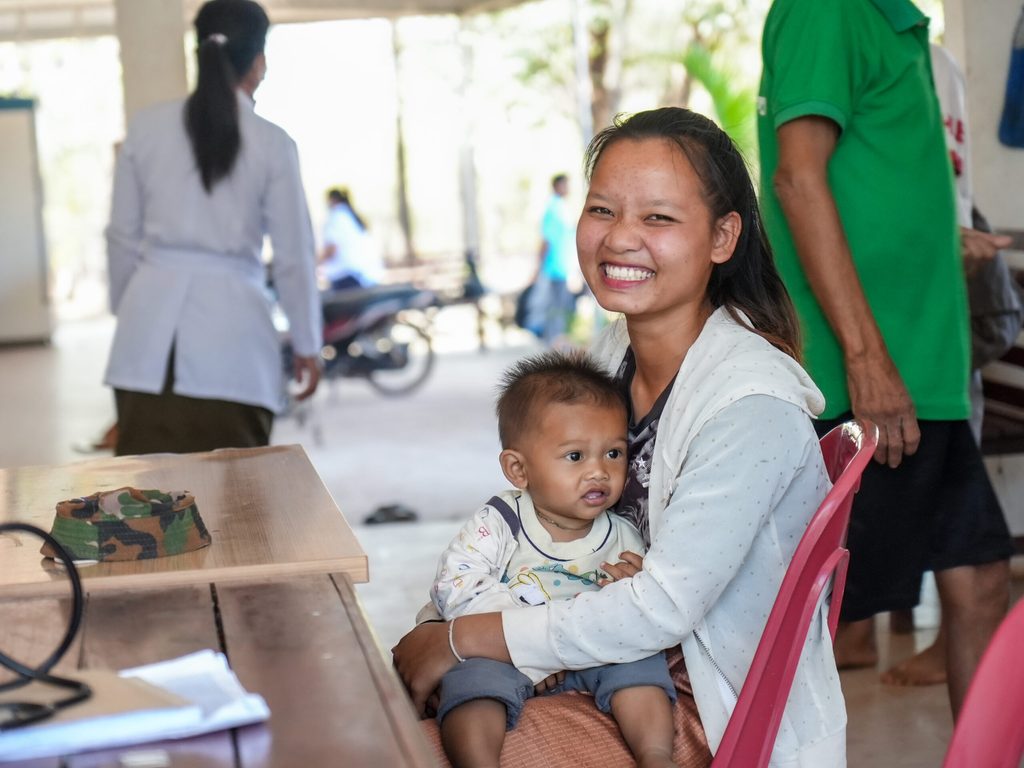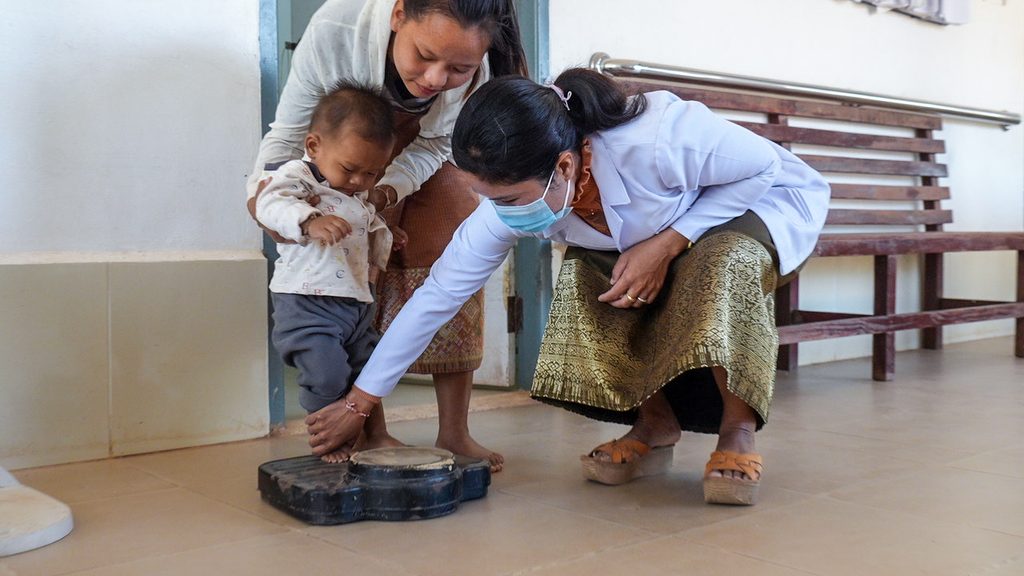Mother Khamkeo used to have to travel far for hospital visits during her pregnancy. Now she visits her local health centre.

Khamkeo, a 20-year-old mother of one, often wondered why so many pregnant women in her village braved long journeys to the provincial hospital, bypassing the nearby health centre.
It wasn’t until she became pregnant herself that she began to understand their concerns. Through conversations with other women—some who had given birth at home, others at the provincial hospital, and a few at the local health centre—she uncovered the challenges many expectant mothers faced in accessing quality maternal healthcare.
A struggle for quality healthcare
In the past, there was only one health facility near Khamkeo’s village, which was in dire condition. The building was old, unclean, and poorly managed. Many families who could afford it chose to take their pregnant wives to the provincial hospital, despite the long journey. Others, however, opted to give birth at home, often without a skilled birth attendant, putting both mother and baby at risk.

“It was difficult to travel on an unpaved road while pregnant.”
Khamkeo
“Many times my husband took me to the provincial hospital, even though it was difficult to travel on an unpaved road while pregnant,” Khamkeo recalled.
The poor conditions of the health centre were not only challenging for patients but also for the health staff.
“The lack of space, limited equipment, and low medical skill made it difficult to provide proper care,” said Lattana, the Deputy Head of the health centre. “It took time to build trust and acceptance from the community.”
In 2021, a newly constructed health centre was handed over to the community. Alongside infrastructure improvements, health staff received training on updated technical healthcare practices, including the 1,000-day approach, delivery assistance, the ‘true-friend’ approach, and health centre management.
“After attending a series of training sessions, I realised that providing a friendly and supportive environment is just as important as having strong medical skills,” added Lattana.
Health staff began actively engaging with the community, especially pregnant women and mothers of newborns. They conducted outreach visits across 11 villages, educating families about the benefits of maternal healthcare and encouraging them to visit the upgraded health facility.
A safe delivery and a brighter future
“When my pregnancy progressed and travelling by motorbike became too difficult, I decided to visit the new health centre,” Khamkeo shared, smiling. “I was amazed by how clean it was, the new equipment, and the kindness of the health staff.”
Last year, she safely delivered her son at the health centre, an experience that reinforced her trust in the health facility.
Since reopening, the number of patients visiting the health centre has nearly doubled each year. In 2024, around 1,900 cases were treated, including 50 successful deliveries.

“The doctors are welcoming.”
Khamkeo
“I always bring my son here for his health check-ups and vaccinations,” Khamkeo added. “The doctors are friendly, and I follow their advice on nutrition practice and childcare. I’m certain I will do my antenatal care and give birth to my next baby here.”
The collaborative efforts of Plan International Laos, the district health authorities, and dedicated healthcare workers have made it possible for families like Khamkeo’s to access reliable and compassionate medical care close to home. This initiative goes beyond enhancing healthcare infrastructure; it is about transforming lives and ensuring every mother and child has a safe and healthy future.
Since 2014, Plan International Laos has been implementing the Public Health and Nutrition Programme in Saravan, in collaboration with local civil society organisations and the local government. With technical and financial support from Plan International Germany, Plan International Australia, BMZ, and Australian Aid, the programme has strengthened healthcare systems and facilities, enhanced service delivery, and improved access to quality healthcare. As a result, health conditions have significantly improved, and countless lives have been saved in communities served by health centres across Saravan Province.


